How to double your conversion rate with an interactive questionnaire?

By Abhinav Girdhar | Last Updated on September 2nd, 2023 10:15 am | 8-min read
Take a moment and think about a first meeting with a prospective customer. A good salesman will not try to sell right away. Instead, he will start by asking specific questions and subsequently use the answers provided to give valuable advice.
Table of Contents
Why does this work? Because in this way, trust is developed between both parties. This trust forms the necessary foundation for a sales transaction to take place further down the road.
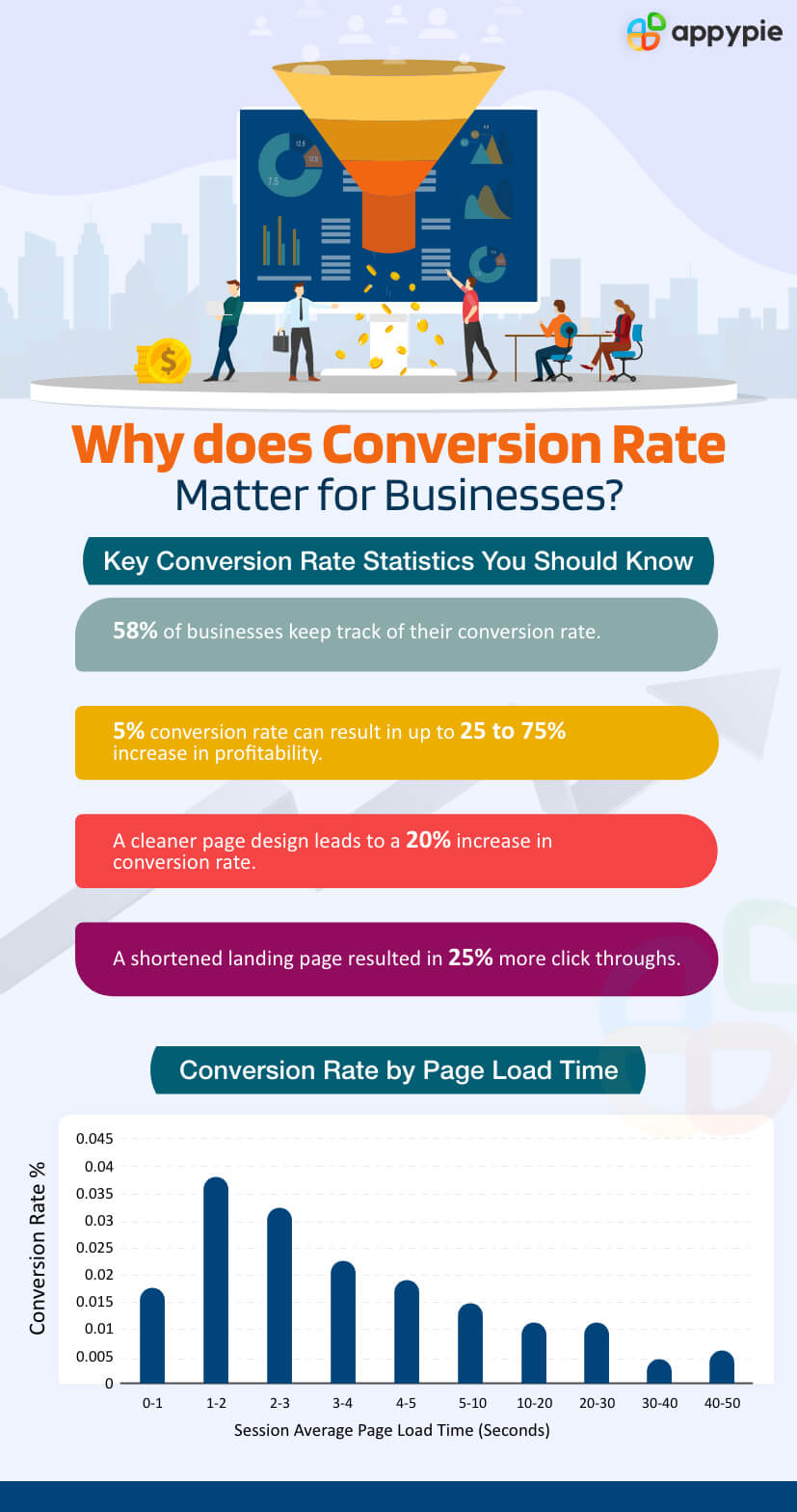 If a prospect visits your website, you’ll want to apply this principle of building trust in an online environment. Therefore, you typically provide useful content on your site such as articles, white papers, guides, etc.
However, this content typically has a limited degree of personalization, since there is no "online salesman" on the website asking relevant questions and giving personalized advice.
Most of your site visitors will not want to work through a 100-page document if only a small part of the content is relevant. People want personalized advice, addressing their unique problems.
The average landing page, like the example below, has a conversion rate of about 2.35%, but this is obviously dependent on a lot of factors.
If a prospect visits your website, you’ll want to apply this principle of building trust in an online environment. Therefore, you typically provide useful content on your site such as articles, white papers, guides, etc.
However, this content typically has a limited degree of personalization, since there is no "online salesman" on the website asking relevant questions and giving personalized advice.
Most of your site visitors will not want to work through a 100-page document if only a small part of the content is relevant. People want personalized advice, addressing their unique problems.
The average landing page, like the example below, has a conversion rate of about 2.35%, but this is obviously dependent on a lot of factors. Interactive questionnaires—the online equivalent of a salesman asking questions and giving advice—have the potential to significantly increase this conversion rate.
This article explains the benefits of interactive questionnaires, and most importantly: How you can use them to generate more leads for your business?
Interactive questionnaires—the online equivalent of a salesman asking questions and giving advice—have the potential to significantly increase this conversion rate.
This article explains the benefits of interactive questionnaires, and most importantly: How you can use them to generate more leads for your business?What is an interactive questionnaire?
We all know traditional questionnaires, surveys, and forms: They ask a series of questions and at the end you get a "thank you." This is a typical example of one-way communication—people throwing their data in a black hole without getting anything back. An interactive questionnaire returns personalized information and valuable insights on completion or during the questionnaire. They make two-way communication possible: a dialogue instead of a monologue. Interactive questionnaires are a specific type of interactive content, which also includes interactive infographics, interactive videos, etc. Furthermore, the generic term "questionnaire" is sometimes interchanged by "assessment," "quiz," or "survey." So, what kind of personalized information or valuable insights can you expect? In a B2C environment, the goal of interactive questionnaires or quizzes is often purely entertaining. We all know quizzes like, "What type of dog are you?" On the other hand, in a B2B environment, the information returned has a more serious tone. Valuable insights are combined with a call to action (CTA) for the prospect to encourage him to take the next step in the sales funnel. This is demonstrated in the example below, as the result that comes after the prospect fills in the questionnaire to check their data privacy risk score gives them a valuable insight before urging them to attend a free webinar.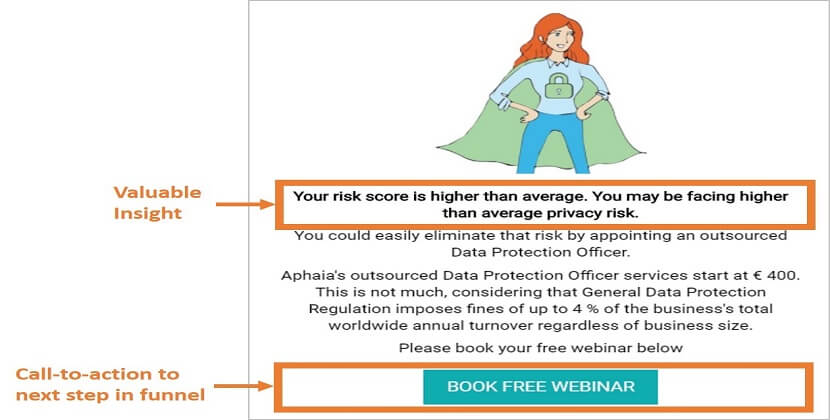 The interaction can also be included in the questionnaire and does not need to be complicated. Often, it is about giving the respondent useful information, just as you would do in a normal conversation. Some examples:
The interaction can also be included in the questionnaire and does not need to be complicated. Often, it is about giving the respondent useful information, just as you would do in a normal conversation. Some examples:- You can ask the name of the respondent, and then use it in subsequent questions—remember that a person’s name is the sweetest sound in any language.
- You can use the answer to a previous question to be more specific and personal in a follow-up question.
- Instead of just asking questions, you can alternate the flow with a "Did you know?" section. This can be static, if you can give a tip or an interesting thought that is valuable for your entire audience.
Why use interactive questionnaires?
In short: interactive questionnaires will attract more traffic and increase conversion rates. Also, as an extra benefit, you collect valuable insights about your audience. According to a study conducted by Content Marketing Institute, 87% of marketers agree that interactive content such as quizzes and interactive questionnaires grabs the attention of the reader more effectively than static content. This is an important benefit in today’s world where an average consumer has a shorter attention span than a goldfish.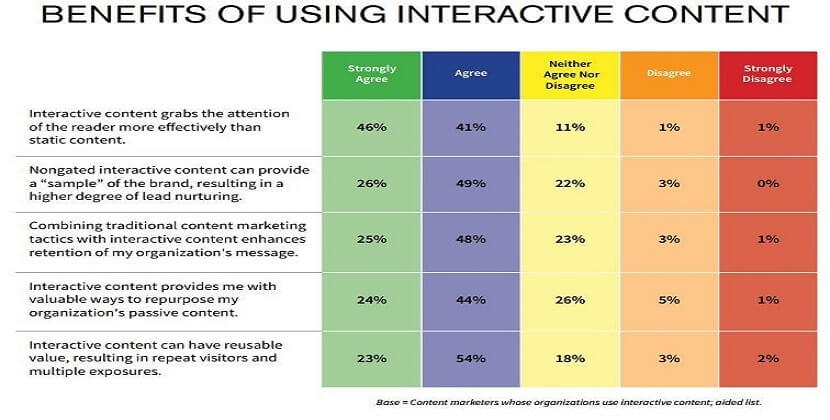 Another study from Demand Metric, reveals that interactive content such as quizzes and interactive questionnaires generates twice as many conversions compared to static content.
The study also indicates that interactive content is shared more frequently. In fact, two of the top 10 most shared posts on Facebook in 2017 were quizzes.
Let’s now take a closer look at two brands that successfully use interactive content in their marketing mix:
Another study from Demand Metric, reveals that interactive content such as quizzes and interactive questionnaires generates twice as many conversions compared to static content.
The study also indicates that interactive content is shared more frequently. In fact, two of the top 10 most shared posts on Facebook in 2017 were quizzes.
Let’s now take a closer look at two brands that successfully use interactive content in their marketing mix: Example #1: Camelbak
Camelbak develops sporting goods to "reinvent the way people hydrate and perform." As the relation between physically strenuous activity and hydration is an important topic, they developed a well-designed interactive questionnaire called the "Hydration Calculator."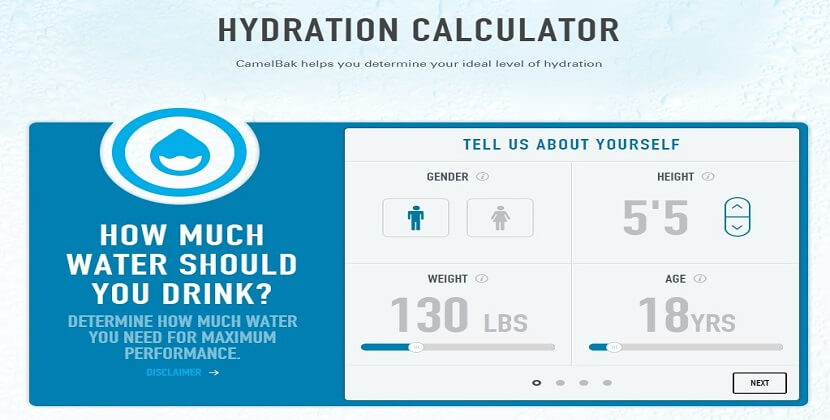 Using the Hydration Calculator, website visitors get an accurate estimation of how much water they should drink for a given sport activity.
The information that is returned is relevant for the participant, regardless of whether or not they use a CamelBak product. This educational aspect of the questionnaire increases its shareability—people will share an educational piece of content more easily than content that is obviously commercial.
The CamelBak questionnaire is an example of a "top-of-funnel" questionnaire, aimed at website visitors that are interested in the topic (hydration in this case), but perhaps not (yet) ready to buy the product.
Using the Hydration Calculator, website visitors get an accurate estimation of how much water they should drink for a given sport activity.
The information that is returned is relevant for the participant, regardless of whether or not they use a CamelBak product. This educational aspect of the questionnaire increases its shareability—people will share an educational piece of content more easily than content that is obviously commercial.
The CamelBak questionnaire is an example of a "top-of-funnel" questionnaire, aimed at website visitors that are interested in the topic (hydration in this case), but perhaps not (yet) ready to buy the product. Example #2: Eneco
Eneco is one of the largest producers and suppliers of natural gas, electricity, and heat in the Netherlands. They created the “Calculaadtor”, a fun play on words that (roughly translated) means they built a calculator that gives people a good indication of what it would cost to buy an EVSE (“Electric Vehicle Service Equipment,” a home charger for your electric car) and convert them into leads.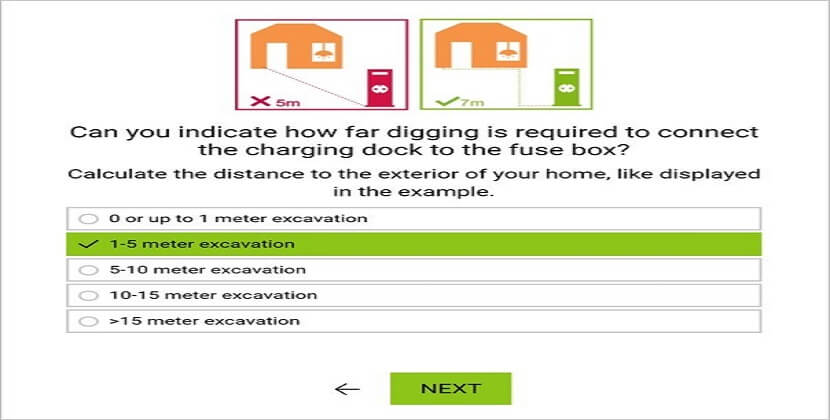 From the example above you can see that the questions in this type of questionnaire can be very specific, because detailed information is needed to select the right product and to calculate the price.
This is an example of a "bottom-of-funnel" questionnaire, aimed at website visitors who are interested in the product: they want to know which product is best suited for their needs and budget.
Eneco used Facebook Ads and Google Display Ads to promote the EVSE-calculator, which they embedded in their website. They managed to collect 1000 leads in just six weeks. Impressive results, given that they only expected about 200 leads in the time period.
From the example above you can see that the questions in this type of questionnaire can be very specific, because detailed information is needed to select the right product and to calculate the price.
This is an example of a "bottom-of-funnel" questionnaire, aimed at website visitors who are interested in the product: they want to know which product is best suited for their needs and budget.
Eneco used Facebook Ads and Google Display Ads to promote the EVSE-calculator, which they embedded in their website. They managed to collect 1000 leads in just six weeks. Impressive results, given that they only expected about 200 leads in the time period.What types of questions do I need to ask?
The challenge is to ask a minimal number of questions while maximizing the value of the feedback. A good way to find which questions to ask is to approach your own salespeople and check which questions they ask to prospective customers on first contact. For example, a content marketing agency could get the following inquiry from a prospect: "I need more leads for my business, and I think content marketing would be a great way to generate additional leads" A good salesperson will not respond with which services to buy, but will instead start asking questions:- “Which activities do you currently perform to collect leads?”
- “What is your current cost-per-lead?”
- “What is your main challenge with the current methods?”
- “What investment are you willing to make?”
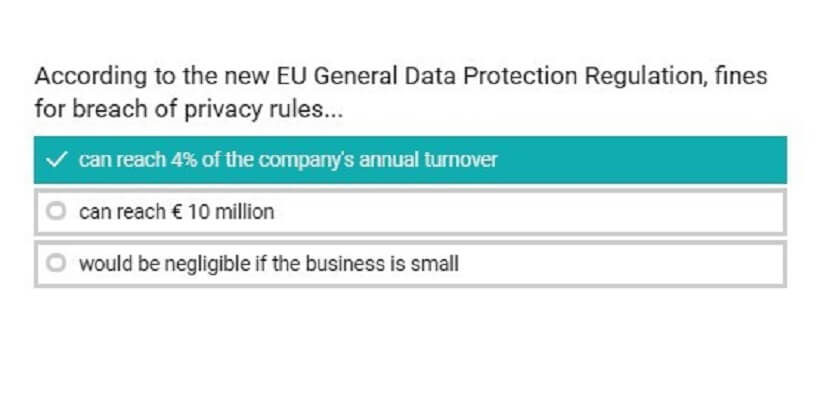 Instead of scoring the participant—which is not really the objective of the questionnaire—you can give the answer in a subsequent screen in a "Did you know?" format. In this way you can give the correct answer independently of the response to the quiz question, and the participant will have learned something valuable.
Instead of scoring the participant—which is not really the objective of the questionnaire—you can give the answer in a subsequent screen in a "Did you know?" format. In this way you can give the correct answer independently of the response to the quiz question, and the participant will have learned something valuable. Eight tips for creating a great questionnaire
- Ensure that you invest enough time in finding a great headline for your questionnaire
- Give the necessary attention to design
- Use one or two colors from your logo
- Use plenty of whitespace
- Use a single font
- Respect alignment
- Choose a background image with little color variation
- Start by asking some non-threatening questions, such as "Are you a man or a woman?" or "How many employees does your company have?"
- Make sure that you communicate upfront what people will get out of the questionnaire
- Think about other channels where you could use the questionnaire besides on your website
- Make your questionnaire stand out by adding pictures, gifs, or even an explainer video
- The ideal number of questions in a lead-generation questionnaire is between five and ten
- Make sure that the end of the questionnaire is not the end of the conversation
You can create a good headline for an interactive questionnaire by asking a compelling question, for example:
"Is it possible to lose 10kgs in 45 days without dieting?"
By asking a question instead of making a statement, you’ll increase credibility and compel visitors to take the questionnaire. A question makes people curious to find out whether they qualify.
Your design must be attractive and appealing. You never get a second chance to make a first impression.
Not a designer? No worries. Most of the online tools offer assessment templates that you can adapt with your own logo and colors.
Here are five design tips for non-designers:
Build up the prospect’s confidence before you ask for any contact information such as email and name. Be sure to explain the purpose for which you will use the contact information. This is another way to build trust, and it is legally required in most countries.
A good tip is to mention that participants will get useful information, regardless of whether they will be buying your product or not.
Be specific about what people will get and what they should do, like in the below design assessment from Adobe.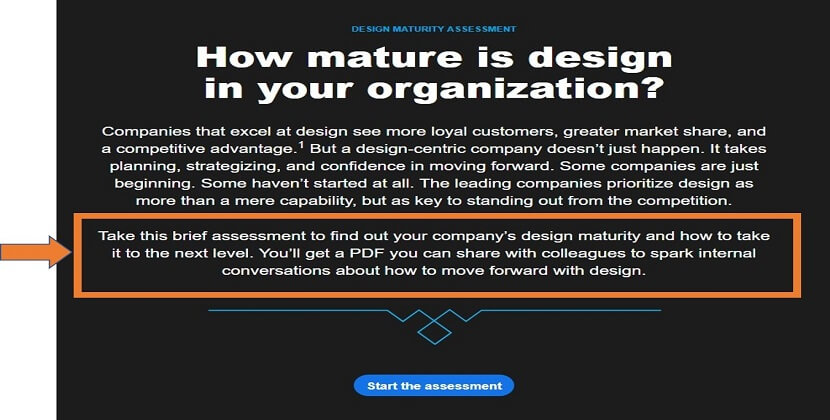
If your company has a regular presence at events or trade shows, you can use the questionnaire to generate leads through mobile devices (tablets). Make sure that you have a good internet connection at the event. Alternatively, you can use offline quizzes and sync the responses afterwards.
This will enhance the entire experience and making it more likely for people to take and complete the quiz all the way to the end. Keep the gif or video for the fourth or fifth question, as this will break the routine and ensure people continue.
In our experience, people start to drop off if you ask more than 10 questions. If you need to ask more questions, be very clear about it up-front.
You can do a manual or automated follow-up, but the most important thing is to follow-up!
If you're doing a B2B quiz or assessment, something that works well is to auto-email a branded and personalized PDF report based on the answers that people gave. The PDF report includes personalized recommendations—as if it was written by a consultant—giving it a high perceived value.
You can use a tool like Webmerge to make a personalized PDF report.
Now it’s up to you.Are you ready to collect more leads and build your first interactive questionnaire?Related Articles
- Unforgettable Cinema And Its Top Famous 60+ Movie Quotes of All Time
- OW-VISCap: Open-World Video Instance Segmentation and Captioning
- Top 20 Best Used Car Websites in India & Around the World
- How To Chat With Your Word Doc
- How to Create a Pivot Table in Excel Online
- Apple Fall Event, 2018: A Bigger iPhone & An Improved Apple Watch
- Chartreuse Color: Unveiling Its History, Shades, and Impact in Design
- How to Create a Stellar Landing Page? [An Essential Guide]
- How to Create a YouTube Channel in 7 Easy Steps?
- 10 Best Mobile Scanning and OCR Apps in 2024
